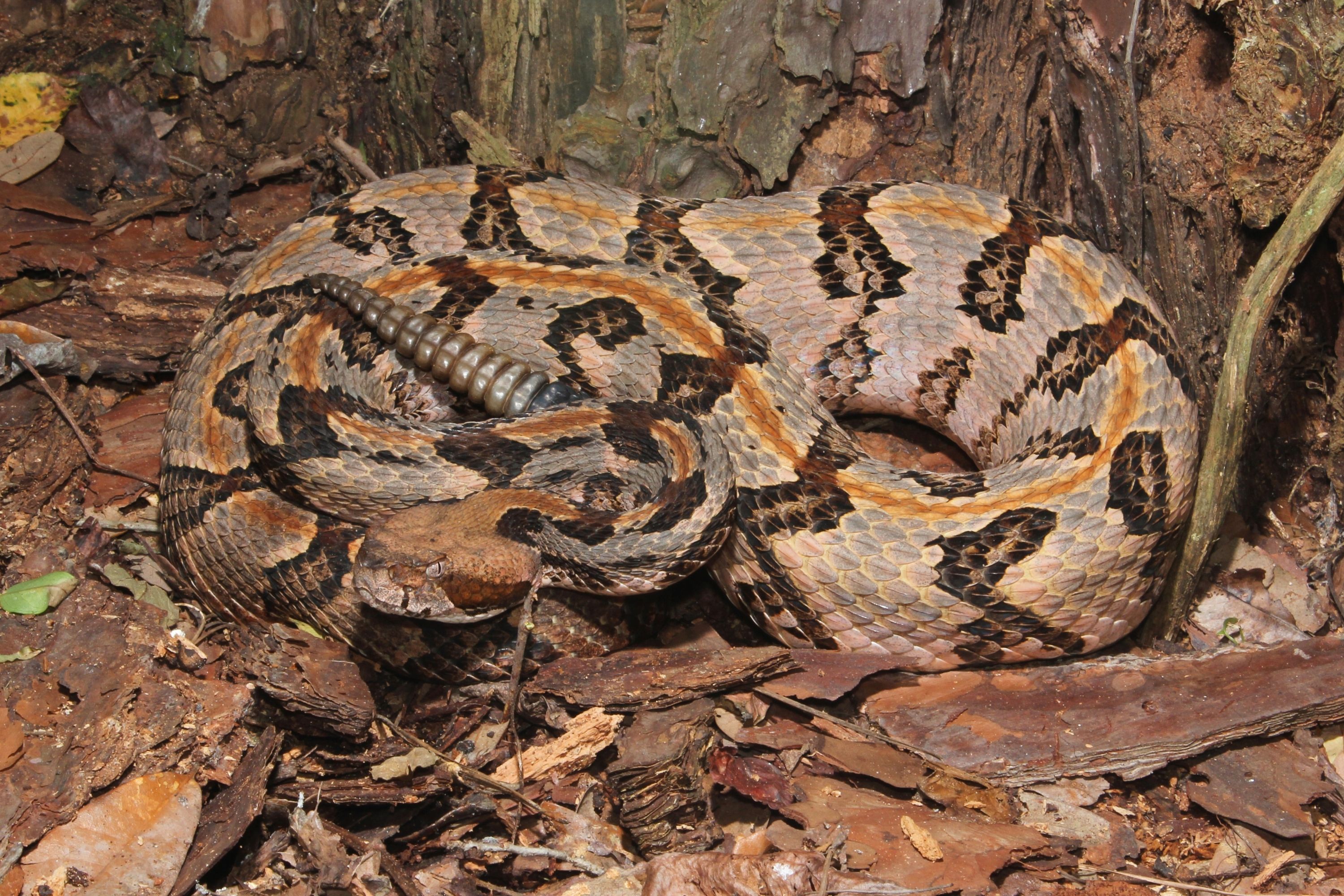Timber rattlesnake
(Crotalus horridus)

Description
The timber rattlesnake, canebrake rattlesnake, or banded rattlesnake (Crotalus horridus) is a species of venomous, sometimes highly venomous, pit viper endemic to eastern North America. This is the only rattlesnake species in most of the populous Northeastern United States and is second only to its relatives to the west, the prairie rattlesnake, as the most northerly distributed venomous snake in North America. No subspecies are currently recognized. Adults usually grow to total length of 91–152 cm (36–60 in). In Pennsylvania, the smallest size females that could produce viable eggs was 72.2 cm (28.4 in). Most adult timber rattlesnakes found measure less than 115 cm (45 in) in total length and weigh between 500 and 1,500 g (1.1 and 3.3 lb), often being towards the lower end of that range. The maximum reported total length is 189.2 cm (74.5 in) (Klauber, 1956). Holt (1924) mentions a large specimen caught in Montgomery County, Alabama, which had a total length of 159 cm (62.5 in) and weighed 2.5 kg (5.5 lb). Large specimens can reportedly weigh as much as 4.5 kg (9.9 lb). The dorsal scales are keeled and arranged in 21–26 scale rows at midbody (usually 25 rows in the southern part of its geographic range, and 23 rows in the northern part). The ventral scales number 158–177 in males and 163–183 in females. Males have 20–30 subcaudal scales, while females have 15–26. The rostral scale is normally a little higher than it is wide. In the internasal-prefrontal area there are 4–22 scales that include 2 large, triangular internasal scales that border the rostral, followed by two large, quadrangular prefrontal scales (anterior canthals) that may contact each other along the midline, or may be separated by many small scales. Between the supraocular and internasal scales, only a single canthal scale is present. Five to seven intersupraocular scales are seen. The number of prefoveal scales varies between two and eight. Usually, the first supralabial scale is in broad contact with the prenasal scale, although slightly to moderately separated along its posteroventral margin by the most anterior prefoveals. Dorsally, they have a pattern of dark brown or black crossbands on a yellowish-brown or grayish background. The crossbands have irregular zig-zag edges, and may be V- or M-shaped. Often a rust-colored vertebral stripe is present.
Taxonomic tree:







